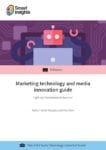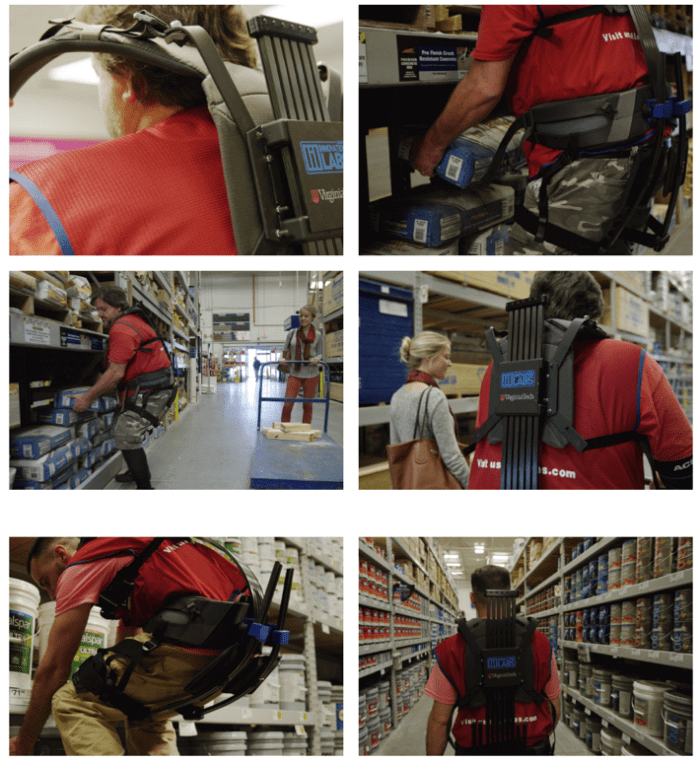Three tools and tactics to inspire 10x thinking
“Companies fail because they do the wrong things or they aren't ambitious, not because of litigation or competition” - Larry Page, Google, 2013
The ability to innovate is one of the most important tools that any business has at its disposal. Whilst some businesses will be more innovative than others, those that have the capacity to innovate and evolve give themselves the best opportunity to survive in a constantly changing world.
Google, currently the third-largest company in the world by market cap, is also one of the most innovative. Since its launch in September 1998, Google has developed a culture of innovation that is based on the concept of 10x thinking, i.e. ideas that lead to 10-fold improvements rather than the more typical 10% improvements.
The way Larry Page (Alphabet/ Google’s CEO) sees it, a 10% improvement means you're doing the same thing as everybody else. You probably won't fail spectacularly, but you are guaranteed not to succeed wildly.
Download our Business Resource – Marketing technology and media innovation guide
The guide outlines the most important new technologies marketers should consider when planning for future investment in customer-facing marketing experiences and communications to encourage brand engagement and purchase.
Access the Marketing technology and media innovation guide
A 10X goal forces you to rethink an idea entirely. It pushes you beyond existing models and forces you to totally reimagine how to approach it.
Trapped by our own cognitive biases
As a result, Page expects Google employees to create products and services that are ten times better than the competition. However, according to a study in the Harvard Business Review, most companies looking for break-through innovation are plagued by incremental thinking. When we look for a new area to pursue, we are trapped into thinking more narrowly, or what researchers call ‘local search’ by our own cognitive biases:
- Availability bias – The tendency to substitute available data for representative data.
- Familiarity bias – The tendency to overvalue things we already know.
- Confirmation bias – The tendency to think new information proves our existing beliefs.
When we’re trapped in this way we only look for opportunities related to what we’re already doing, meaning we prevent ourselves from going above and beyond. For companies serious about finding genuine break-through opportunities, we need to find a way to navigate these cognitive obstacles.
Radical thinking requires radical approaches and in the HBR article, the authors Nathan Furr, Kyle Nel and Jeffrey H. Dyer three unconventional tools and techniques to get us thinking differently:
Science fiction
Science fiction enables us to engage in ‘mental time travel’ and explore worlds of possibilities that are outside of our current sphere of understanding. Some of the most famous break-throughs throughout history could be attributed to science fiction, including atomic power (HG wells), mobile phones (Star Trek) and self-driving cars (Isaac Asimov).
Why this is important?
Science fiction takes us away from the here and now and into places where we can visualize new, innovative futures for our businesses. One was of doing this is through a process called design fiction. As PWC explains:
“Design thinking is a thought experiment, a way of purposefully imagining future societies and the set-dressing that goes with them while dispensing with the shackles of reality – such as technological capability, funding or commercialization potential”
This type of thinking takes courage and the ability to suspend our disbelief to push the boundaries of our imaginations.
Examples/case studies
The US home improvement chain Lowe’s embraced science fiction to look at ways in which augmented reality, robotics and other technologies could be used to enhance the retail experience. They gave science fiction writers customer and technology data to science fiction writers who imagined what Lowe’s might look like in 10 years.
As a result of this initiative, the company became the first retailer to deploy autonomous robots for customer service and inventory, roll-out 3D printing services and exosuits (external robotic skeletons) for employees unloading trucks on the shop floor.
Analogies
Analogies allow us to look at problems from a different angle. The Nobel Prize-winning physicist Werner Heisenberg developed his famous “uncertainty principle” by comparing a man walking between lampposts to an electron. Without using this analogy, he may never have made this break-through.
Why this is important?
As with science fiction, analogies give us the opportunity to use our imaginations and look at problems in a new way. Rather than looking at small, incremental changes, analogies can give us a route towards reaching bigger, break-through thinking. Instead of thinking rationally and safely, we can start thinking bigger.
Analogies can be used to transfer one business idea to another between different industries (e.g. superstores to used car sales) and as a way of looking at how not to do something (e.g. learn from failures by looking at the approaches certain companies took).
Examples/case studies
CarShop is one of the UK's leading used car supermarket groups. They provide a very wide selection of cars, at low prices, with no haggling. It’s likely CarShop used analogical thinking to transfer this concept from CarMax in the US, who themselves took a similar approach from Circuit City, which introduced the superstore approach to electronics retailing in the 1970s.
First-principles logic
A “first principles” approach questions the status quo by re-examining the foundational principles about something and re-designs it from the ground up. For example, a marketing agency may have always measured performance using a last-click methodology. A first-principles approach would challenge this concept and look at something different such as incremental measurement using treatment and control groups.
Why this is important?
Using first-principles logic allows you to question, interrogate and challenge received wisdom and look for alternative solutions that may be completely (rather than iteratively) different to what has always happened. So often, companies fall into a comfort zone and continue doing what has always worked but this can lead to a common decision-making bias known as underestimating the risk of the status quo. As another HBR article explains: “if your team’s strategy can be summed up by the English wartime slogan “Keep Calm and Carry On,” you need some new approaches to tackle their resistance”.
Examples/case studies
Following eight launches in 2016 and 18 in 2017, SpaceX’s reusable rocket technology moved out of the proof-of-concept stage to become the backbone of a growing fleet of flight-proven rockets. SpaceX’s founder, Elon Musk, worked out that he could build rockets himself by breaking the technology and engineering down to their basic principles. From there, he worked with his team to develop affordable, reusable rockets by using simpler commercial-grade components, saving NASA hundreds of millions of dollars.
This approach appears to be underpinned by a philosophy that Musk has used before:
“In most cases, people solve problems by copying what other people do with slight variations. I operate on the physics approach of analysis by first principles, where you boil things down to the most fundamental truths in a particular area and then you reason up from there.”
Conclusion
Achieving break-through innovation is something only a handful of companies have the ability to realize. When Google transitioned to Alphabet in 2015 (Google is now a subsidiary of parent company Alphabet), one of the main reasons was to allow Google’s founders (Larry Page and Sergey Brin) to separate everyday parts of the business (e.g. search and advertising) from their ‘moonshots’ (e.g. self-driving cars, AI and Life Sciences).









